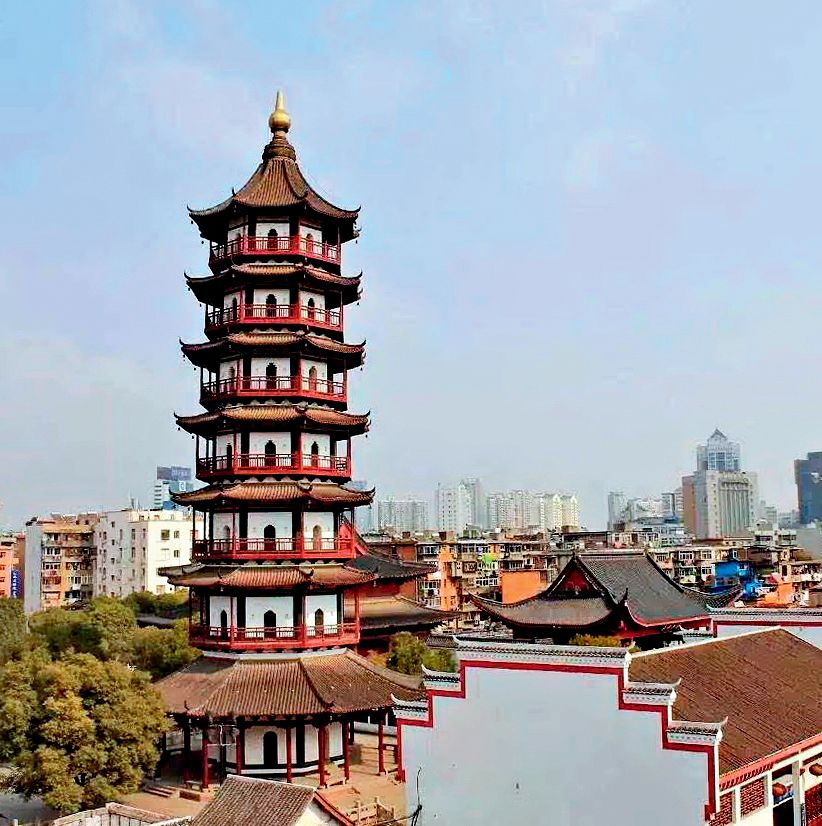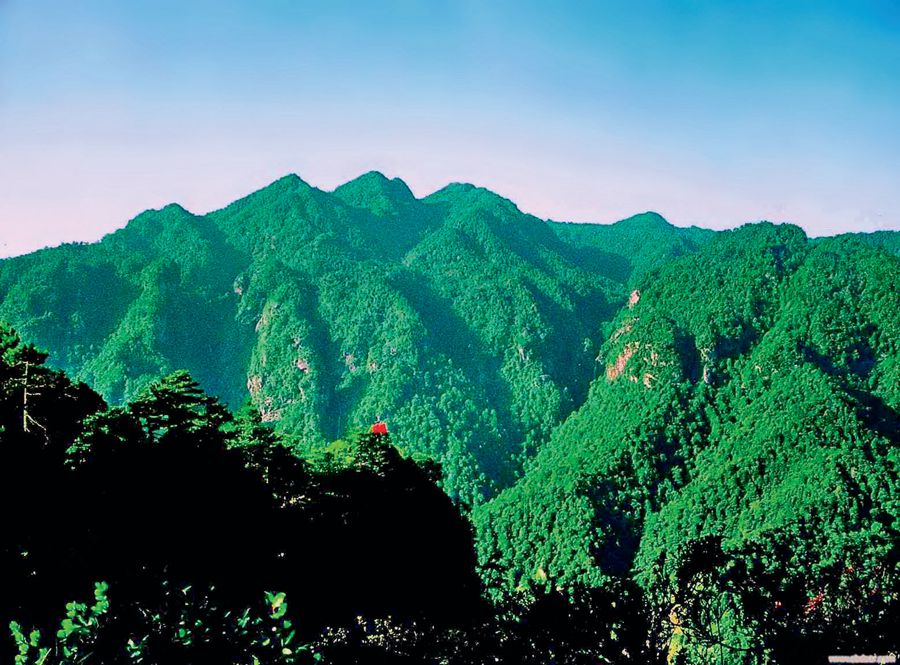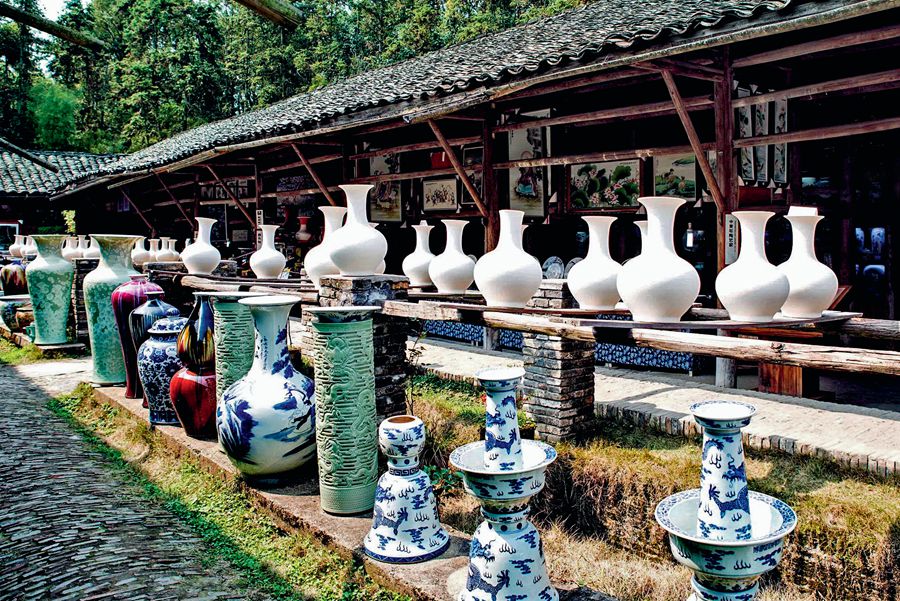Tengwang Pavilion
It is located on the east bank of the Ganjiang River in the northwest of Nanchang. It was named after its sponsor Prince Li Yuanying (630-684), younger brother of Emperor Li Shimin of the Tang Dynasty. It is known as one of the top three buildings in southern China, together with the Yellow Crane Tower in Hubei and Yueyang Tower in Hunan. The pavilion has been rebuilt many times in history. The main body of the current was completed in 1989. With a net height of 57.5 meters and a total of nine floors, the building is adjacent to the Ganjiang River and faces the Xishan Mountain.
Transportation: Take buses No. 2 Inner Ring, No. 26 Inner Ring, or No. 302 Inner Ring, and get off at the Tengwang Pavilion Stop.

Shengjin Tower
Located on the Shengjinta Street, Xihu District, Nanchang City, it was built in 904-907. According to legend, before the construction of the tower, an iron box was dug out from there, containing four gold ropes, three ancient swords, and 300 Buddhist relics, hence the name. The tower is a brick-and-wood structured pavilion tower of typical southern style. The 50.86-meter-high tower has a strong religious vibe. Every October, a temple fair is held here. Visitors can participate in ritual activities, watch folk songs and dances, try local snacks, and experience folk culture.
Transportation: Take Metro Line 3 and Line 4 to Shengjin Tower Station.
August 1st Nanchang Uprising Memorial Hall
Located in Zhongshan Road, Xihu District, it consists of two buildings. The old building is the former site of the Nanchang Uprising Command. The new one is for exhibitions. The memorial hall is divided into several parts. There is a free narrated information session every half hour. The former site of the Nanchang Uprising Command was originally the Jiangxi Grand Hotel. This is a doughnut shaped building with a combination of Chinese and Western characteristics. In late July 1927, the uprising army went to Nanchang and rented the hotel as the uprising’s command center. Now it is arranged for visits as it was during the uprising.
Transportation: Take subway Line 1 to the Bayi Hall Station.

Jinggang Mountain Scenic Resort
It is about 330 kilometers from Nanchang and a national scenic spot. With a forest coverage rate of 81.2 percent, the region still retains large untouched virgin forests. The Jinggang Mountain is the first rural revolutionary base in China established by Mao Zedong and Zhu De and other proletarian revolutionaries. It is known as the cradle of the Chinese revolution. It has 11 scenic areas, including more than 30 cultural landscapes and more than 100 revolutionary sites. It is a mountain resort integrating sites of human interest and natural scenery.

Jingdezhen
About 200 kilometers from Nanchang, it is called the world’s porcelain capital. The production of royal porcelain wares has been going on there for more than 640 years. During that long and illustrious history, Jingdezhen has learned widely from famous kiln styles and techniques from all over the country. The porcelain produced there has gradually formed a unique reputation of being as white as jade, as bright as a mirror, as thin as paper, and sonorous like a bell.”
In Jingdezhen, you can go to the Imperial Kiln, Jingdezhen Folk Kiln Museum, and Jingdezhen Ceramics Museum to appreciate porcelain. You can also go to the Ceramic History Expo Area to see the whole process of making porcelain by local artists.

Lushan Mountain
About 130 kilometers from Nanchang lies the Lushan Mountain, which has been a famous historic and cultural landmark since ancient times, and has won the title of World Geopark, World Cultural Heritage, and China 5A Scenic Area. The tourist attractions can be roughly divided into two categories: natural attractions and cultural attractions. The natural landscapes include dangerous peaks, deep valleys, waterfalls, and picturesque clouds. Besides the natural splendor, the site was also the setting for major cultural changes and political events in the past dynasties that have shaped the course of Chinese history.
Nowadays, Lushan Mountain is still a famous summer resort. It is home to the villas built by more than 20 countries including Britain, Russia, America, and France. The most famous one is the Meilu, which was once the summer residence of Chiang Kai-shek and his wife.



